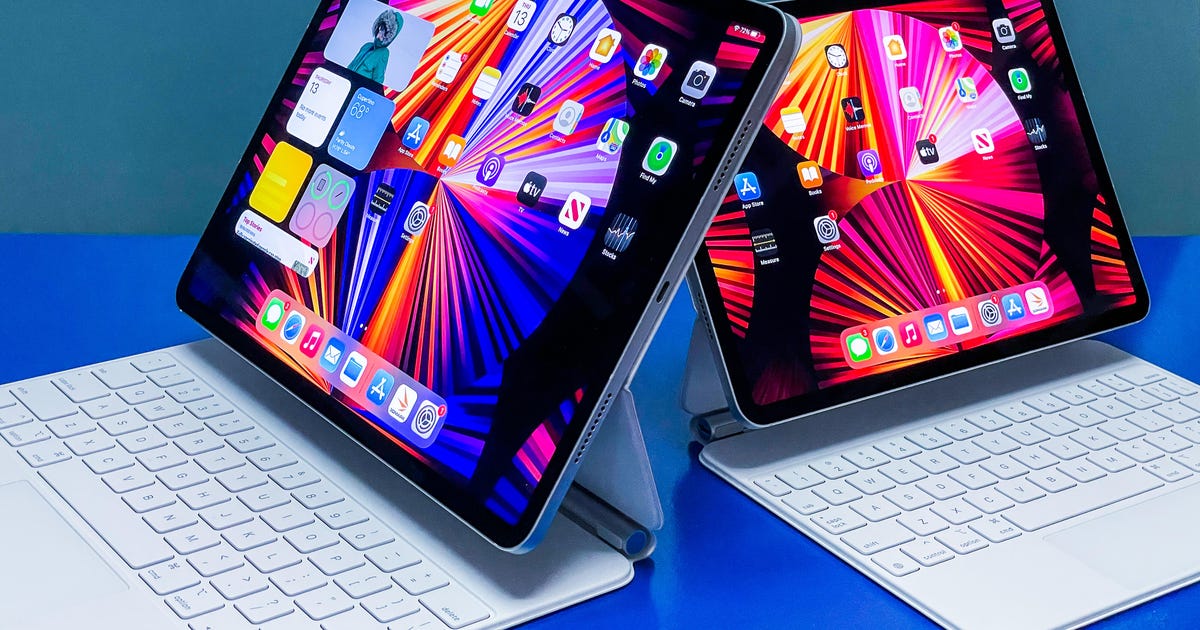How Apple Could Supercharge The M1 IPad Pro At WWDC
How apple could supercharge the m1 ipad pro release how apple could supercharge the m1 ipads how apple could supercharge the m1 utilizes how apple could supercharge the m1 carbine how apple could supercharge the m 16 how apple could supercharge the brain how apple could supercharge the wall how apple could supercharged how apple tv works how apple started

How Apple could supercharge the M1 iPad Pro at WWDC
This story is part of WWDC 2022, CNET's complete coverage from and about Apple's annual developers conference.
What has an M1 chip and isn't a Mac? Apple's newest iPad Pros. Apple's latest high-end tablets are extremely fast, have improved displays and cameras and higher-speed Thunderbolt throughput. And while some iPads have A-series chips and some have the Mac-like M1, there's one thing that's still the same: iPadOS. But that OS could change starting at next week's WWDC.
Apple may never merge iOS and MacOS. But that doesn't mean the iPad and Mac worlds aren't already converging. Sharing a common M1 chip is just part of their under-the-hood similarities: Apple's Mac and iOS environments have been dovetailing with shared apps, cross-device sharing and app continuity and literal extension features like Sidecar, which turns an iPad into a second Mac display.
Apple tends to show an advance look at where the next version of its OS is heading at the annual WWDC developer conference. This year, the online-only WWDC is happening mere weeks after the launch of its recent iPad Pros. There are looming possibilities of what a new iPadOS could unlock in the latest iPads. Also, these updates could factor into whether or not you should consider buying one.
Let's assume Apple does not create a "Mac mode" in the iPad Pro, even though I'd love for it to happen. There are other clear ways the new iPad Pros could (and should) be massively improved in the next version of iPadOS.

The 2020 iPad Pro works with monitors in a similar way to the 2021 iPad Pro, but that should change. (Seen here: 2020 iPad Pro in Kensington StudioDock, connected to monitor)
Scott Stein/CNETTrue monitor support for multiscreen connections
The iPad Pro's current monitor support is limited to apps that choose to support it for second-screen features. Guess what? Almost none do. Otherwise, plugging in a monitor only ends up mirroring iPadOS in a version that is pillarboxed to the aspect ratio of the iPad display.
The iPad Pro should allow a monitor to create a second screen of apps that can launch different multi-app interfaces than the iPad (aka the way monitors work on PCs or Macs). A second screen is literally supposed to be about extending your workspace, and yet the iPad Pro currently allows almost none of this.
I work with a monitor plugged into my MacBook Air nearly all the time. On an iPad Pro, this could mean the type of multitasking that wasn't possible before. I could easily Zoom and edit a document, take notes, write and watch a livestream and... well, you get the picture. The M1 chip and added RAM should handle this easily: Again, Macs do it.
Revamp the iPadOS multitasking experience
While we're at it, let's open up how apps can be shown on the iPad, period. Apps are extremely limited to certain split-screen modes, or narrow hovering app windows that can be pulled up on top of open apps. Not all apps are compatible with Apple's iPadOS split-screen features, either. Meanwhile, iPadOS doesn't even have all the new widgets that can be laid into the iOS home screen on current iPhones.
Yes, I want apps to be able to be laid out in grids, with more than two at a time. I want widgets to be placed anywhere if I'd like to have them there. With a monitor, I'd like to drag apps to other free spaces in my workplace and rearrange things on the fly, like I do on Macs. I'll take whatever improvements Apple can give, but things need to change from the current structure: iPadOS feels way too limiting right now for the M1's capabilities.
Get more pro Mac apps onto the iPad
Apple enabled iOS apps to run on Macs last year. This year, the opposite should happen: let all the Mac apps move over to iPadOS on M1 iPad Pros. Apps may need to be converted or touch-optimized, but Apple already does an excellent job with keyboard, trackpad and mouse support on iPadOS. I can't see any reasons why Mac apps shouldn't run on iPads that are running the same processor. Ideally, these apps would also be cross-buy if you already own them on a Mac.
The iPad Pro is considered a professional computer, but it doesn't even have Apple's own Logic or Final Cut Pro. Those, at the least, should be part of the M1 iPad Pro experience. I'd expect Apple to announce a lot more pro apps, and support for them, at WWDC.
This also extends to coding. Apple's XCode environment, which is used to create Mac, iOS, iPadOS, WatchOS and TVOS apps, is Mac-only. The moment those move to the iPad Pro is the moment the iPad Pro can start to really be considered a pro alternative to the Mac.
We'll find out soon
Apple's virtual WWDC is starting June 7. We'll find out how much the iPad Pro's OS changes then. But I'd expect that this year will be a big opportunity for the M1 iPad Pro. Right now, the tablet feels like a device still seeking its full unlocked potential.
Source
